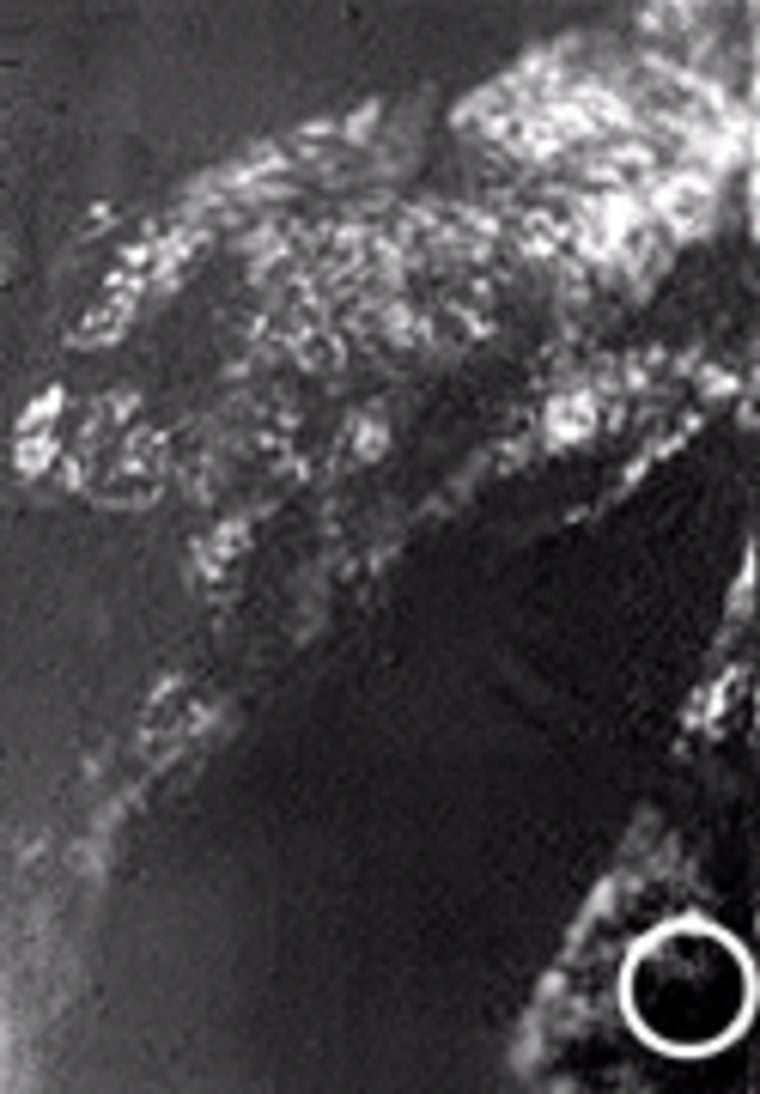The European Huygens spacecraft landed in mud when it hit the surface of Titan, a scientist said Tuesday. The latest pictures underline beliefs that the Huygens probe landed near a large body of liquid on Friday when it ended a seven-year mission to the previously untouched moon.
The European Space Agency released animated pictures of the final feet of the probe's descent to the moon of Saturn. Another series of photos showed how Titan's thick atmospheric haze gave way to a more solid but clearly varied surface as the spacecraft tumbled and spun toward its final resting place.
"There wasn't even a glitch at impact. That landing was a lot friendlier than we had anticipated," said Charles See, a scientist who has been studying the images.
Images taken on descent, from an altitude of about 12 miles (19 kilometers) right down to the surface, suggest the presence of liquid, possibly flowing through channels or washing over larger areas, said Marty Tomasko of the Lunar and Planetary Laboratory at the University of Arizona in Tucson.
Although the moon has water ice, scientists do not believe the liquid flowing through the channels seen by Huygens is water, since temperatures there hover around 292 degrees below zero Fahrenheit (-180 degrees Celsius). Rather, Titan is thought to have lakes, rivers and perhaps even seas of liquid methane and ethane.
The soil where Huygens landed has a texture resembling that of wet sand or clay with a thin solid crust. The composition is primarily a mix of dirty water ice and hydrocarbon ice, scientists said.
The Huygens team said it received "excellent" data from the moon's surface for an hour and 12 minutes. In all, 474 megabits of data — including 350 images — were transmitted during the descent and surface operations. Now the probe is inert, its batteries spent, but scientists say they will be poring over the data for a long time to come.
Further scientific findings are to be discussed at a news briefing Friday.
Titan is the first moon other than Earth's to be explored. Scientists believe its atmosphere may be similar to that of the primordial Earth, and studying it could provide clues to how life began.
Huygens was spun off from the Cassini mother ship on Dec. 24 for its final plunge, which climaxed with a 2-hour-long parachute descent to Titan last Friday.
This report includes information from The Associated Press as well as MSNBC's Alan Boyle.
